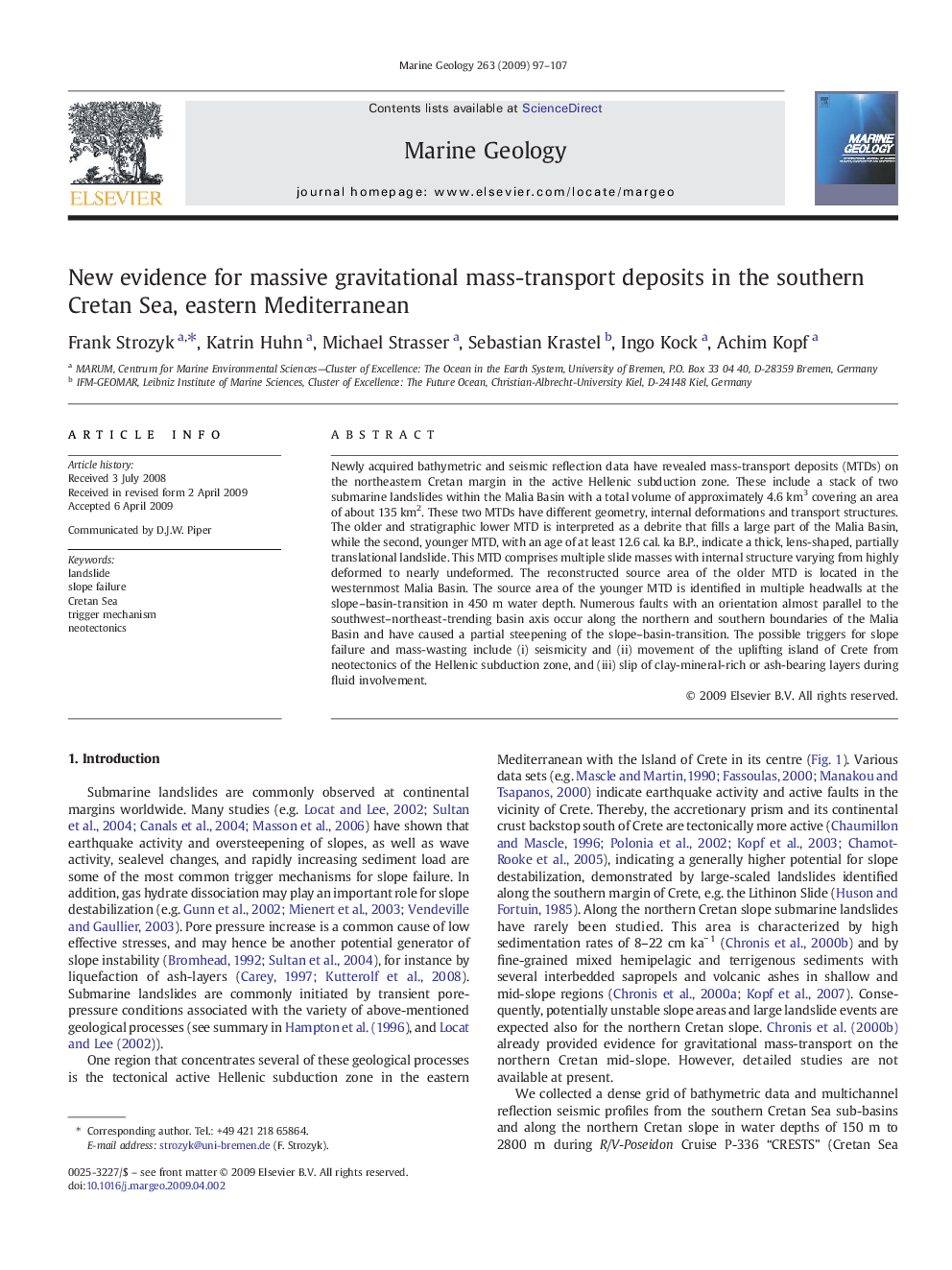| Article ID | Journal | Published Year | Pages | File Type |
|---|---|---|---|---|
| 4719178 | Marine Geology | 2009 | 11 Pages |
Newly acquired bathymetric and seismic reflection data have revealed mass-transport deposits (MTDs) on the northeastern Cretan margin in the active Hellenic subduction zone. These include a stack of two submarine landslides within the Malia Basin with a total volume of approximately 4.6 km3 covering an area of about 135 km2. These two MTDs have different geometry, internal deformations and transport structures. The older and stratigraphic lower MTD is interpreted as a debrite that fills a large part of the Malia Basin, while the second, younger MTD, with an age of at least 12.6 cal. ka B.P., indicate a thick, lens-shaped, partially translational landslide. This MTD comprises multiple slide masses with internal structure varying from highly deformed to nearly undeformed. The reconstructed source area of the older MTD is located in the westernmost Malia Basin. The source area of the younger MTD is identified in multiple headwalls at the slope–basin-transition in 450 m water depth. Numerous faults with an orientation almost parallel to the southwest–northeast-trending basin axis occur along the northern and southern boundaries of the Malia Basin and have caused a partial steepening of the slope–basin-transition. The possible triggers for slope failure and mass-wasting include (i) seismicity and (ii) movement of the uplifting island of Crete from neotectonics of the Hellenic subduction zone, and (iii) slip of clay-mineral-rich or ash-bearing layers during fluid involvement.
